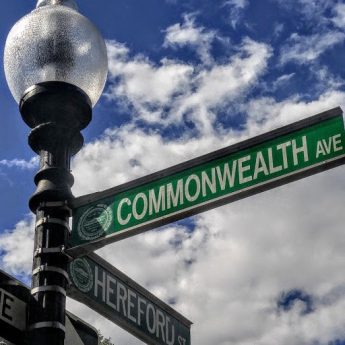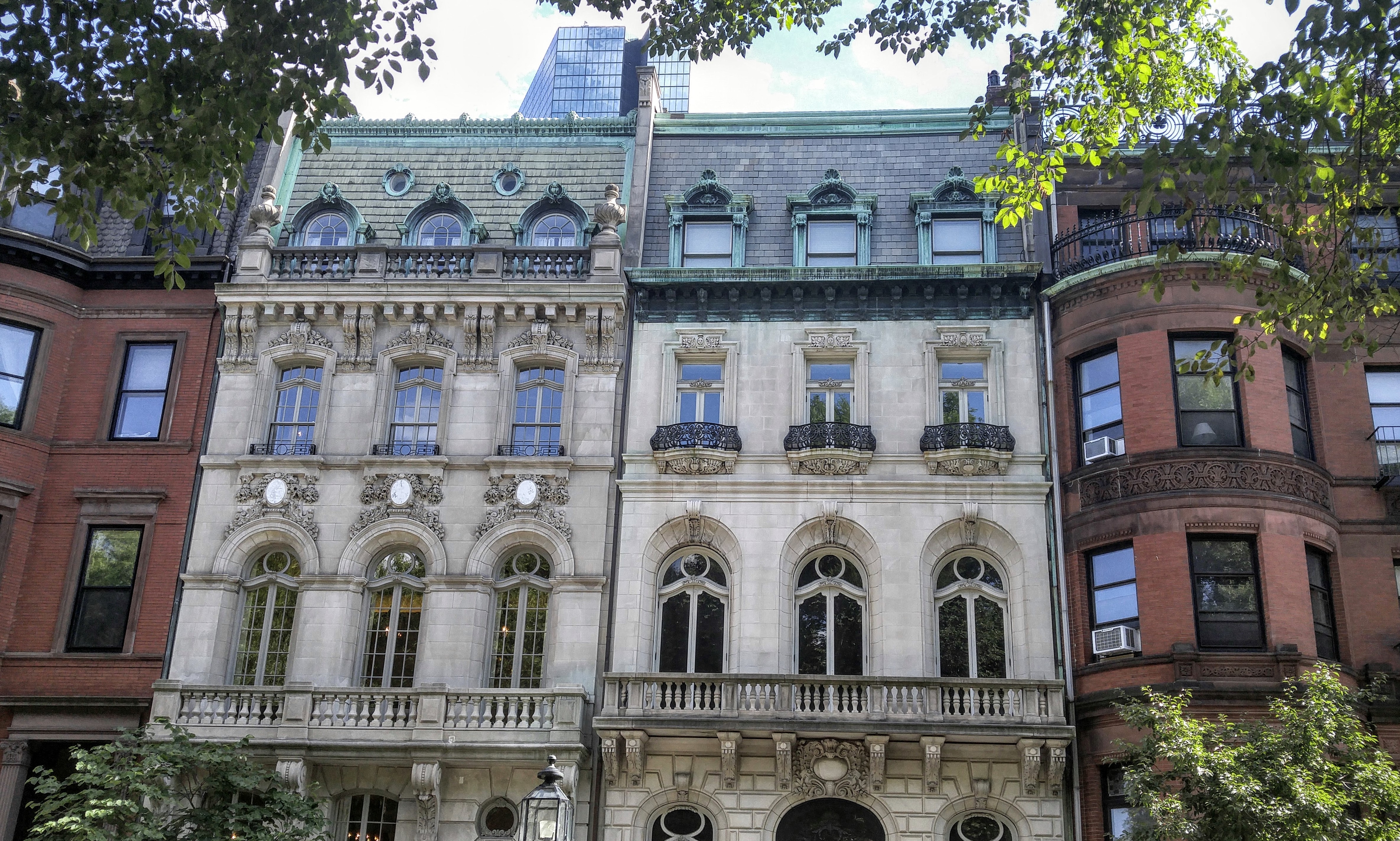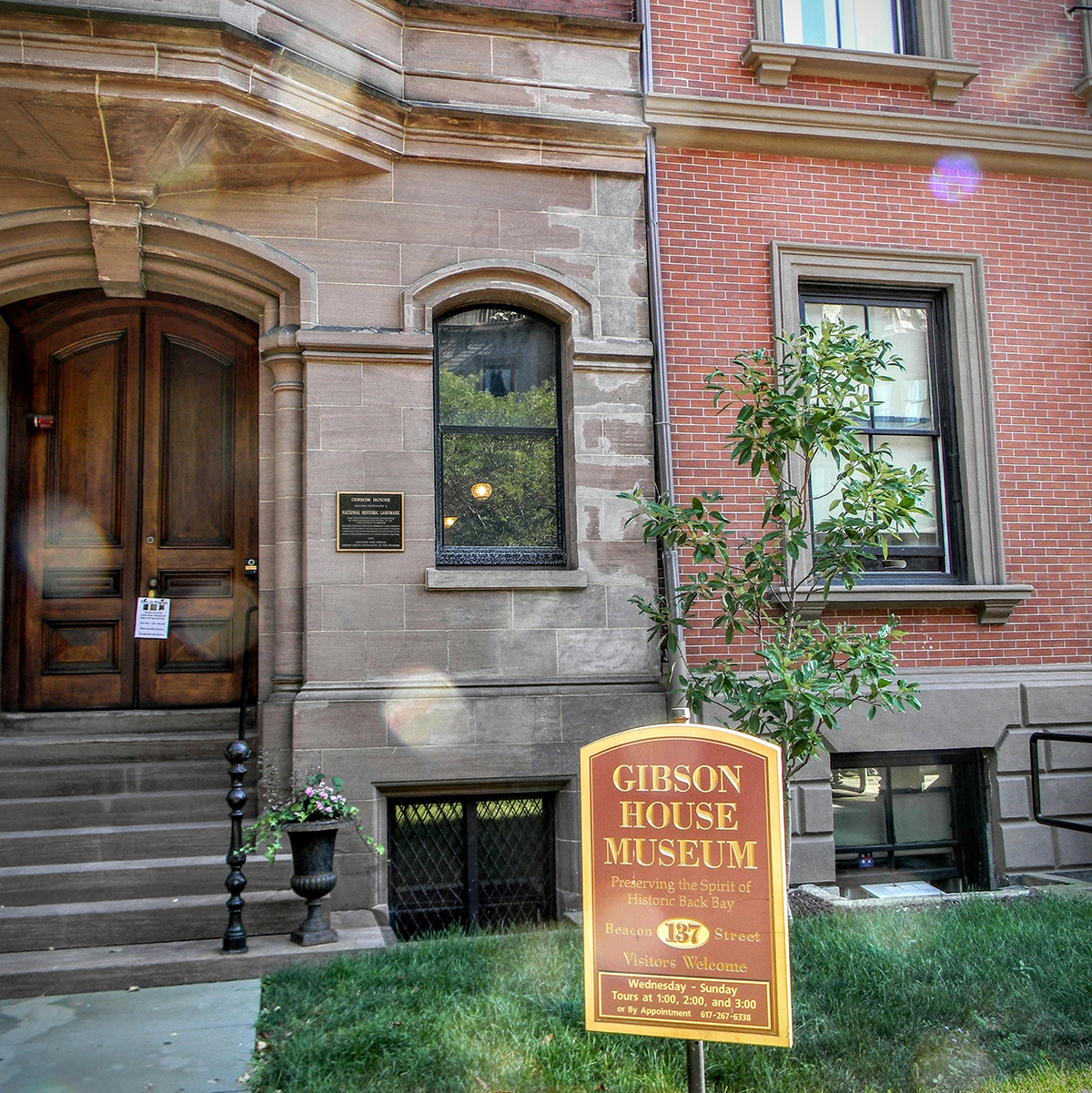This is the second in a blog series “What I Love About ….” covering unique residences, shops, restaurants, and experiences found in the upscale neighborhoods of Boston.
There’s so much to share about the unique and exquisite Back Bay neighborhood, I had to break it down into three parts:
Part 1 covered Back Bay’s vibrant residential life
Part 2 covered “Off the Beaten Path” restaurants and shops I’m fond of
Part 3 features some of my favorite Back Bay residences and their unique histories.

Part 3: Bay Bay Residences and their Unique Histories
Remarkably, each home in Back Bay has its own genealogy, thanks to intensive and detailed research and writing by the Neighborhood Association of the Back Bay, www.backbayhouses.org.
My Favorite Buildings
The “Commonwealth Sisters” at 128 and 130 Commonwealth Avenue. I like the way these residences stand apart from their neighboring homes, with their unique Beaux Arts facades. One can only imagine the supremely elegant interiors of these homes.
My favorite features are ones typically found outside of the city: a heated driveway and garage for 5 cars, 3 terraces, and a 2000-bottle wine cellar.
Who needs 5 cars in the city? A well-known auto dealer who purchased 128 Commonwealth created that space for his personal auto fleet.
The most recent sales of these homes have been among the highest in the city. 128 Commonwealth sold for $8.75 Million in 2010; 130 Commonwealth sold for $11.6 Million in 2013.
Read on for more about the histories of these majestic homes.
 |
|
| 128 Commonwealth | 130 Commonwealth |
Gibson House Museum at 137 Beacon Street. A museum in residential Back Bay? This isn’t where you’d typically find a tourist attraction. Because the Gibson House Museum is a well-kept secret, if you go there, you may enjoy a private tour (*) of a home that’s been preserved just the way Gibson family members lived in it for 3 generations.
In fact, on this tour, you feel as if you’ve dropped in on a home whose owners have left and will soon return. The scene resembles the set of Downton Abbey. Lighting is generated from original fixtures, tables are set, bells used to summon servants are visible, and more. My favorite is a Victorian-period ice cream maker from the turn of the century.

Read more about the Gibson family and their ownership of the home, here.
The Gibson House Museum, a superb example of the Victorian era, is open to the public from Wednesday through Sunday weekly. (*) Tours are offered at 1:00, 2:00 and 3:00 PM.
The Algonquin Club at 217 Commonwealth Avenue. In doing research about the Club for this blog, I was pleased to learn that the Algonquin was the first private men’s club in Boston to allow women as full members. Below are some highlights of the building’s and Club’s history.
The Algonquin Club was incorporated by the Commonwealth of Massachusetts in 1886 for the purpose of maintaining a “Social Club and Reading Room” in the city of Boston.
The building’s famous architects were McKim, Mead & White, selected among a few who submitted architectural drawings anonymously, so the final selection was completely objective. The Club’s members and their guests have enjoyed the same facilities ever since the building was constructed in 1888.
The Club ran into a snag with the city of Boston, who sued the Algonquin over violating a zoning ordinance. This resulted in removal and rebuilding of a portion of the façade.
Quiz: Can you spot the difference between the building from 1888 and now? (See answer below.)


Answer: The porticos adjacent to the 2nd floor bay window and balcony were removed.
Read on for more about the unique history of the building – and the Club.
https://backbayhouses.org/217-commonwealth/
This is Part 3 of the second in a blog series of “What I Love About…“ For more on Boston’s Back Bay, read Part 1 and Part 2 or contact Amy Donovan at adonovan@landvest.com.
